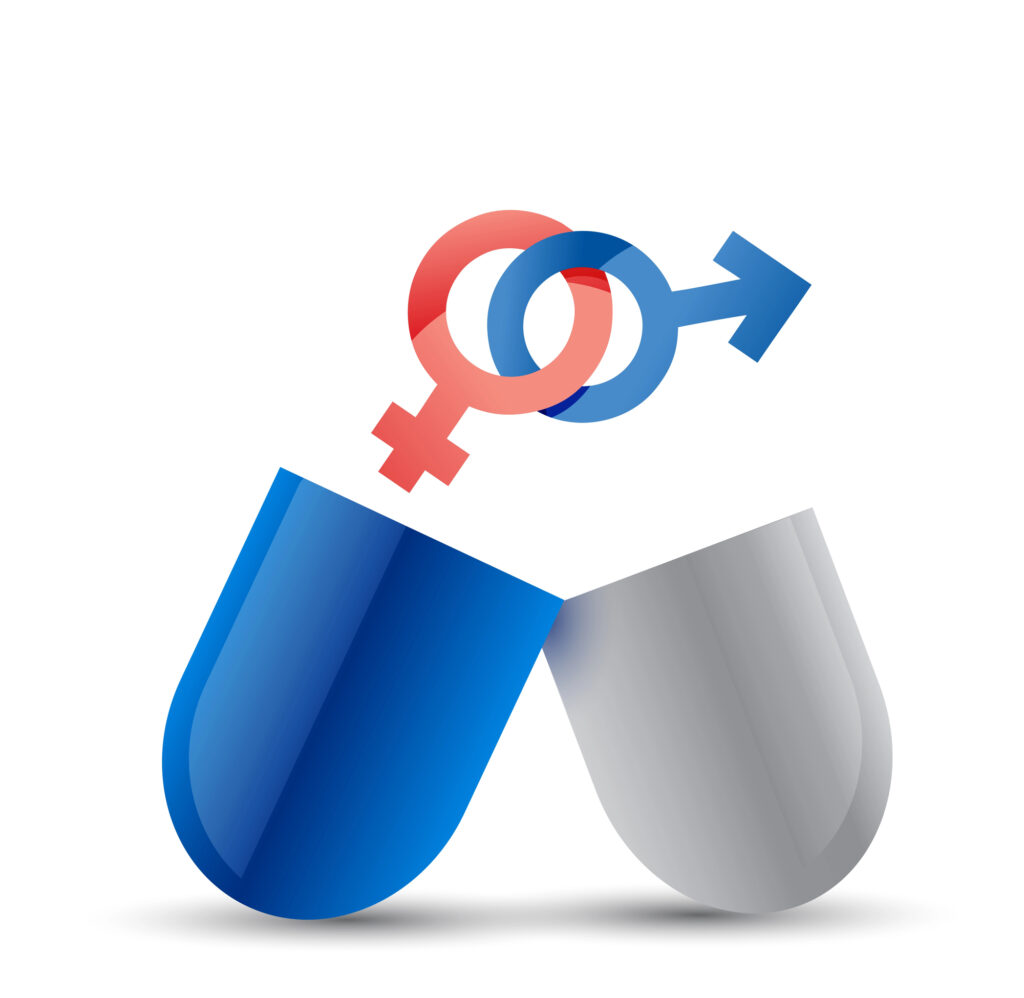From biological differences to socio-cultural factors, gender medicine is revolutionising the approach to care, focusing on more accurate diagnoses, personalised treatments and greater equity between men and women.
Gender medicine is an innovative approach to the prevention, diagnosis and treatment of disease that considers the biological, hormonal, genetic (but also social) differences between men and women. This discipline is based on the idea that gender significantly influences the manifestation of pathologies, the response to medication, clinical outcomes, rehabilitation modalities and any other clinical aspect, making it necessary to adapt medical strategies to ensure more effective and equitable care.
The World Health Organisation points out that, in addition to the clear (but too often ignored) biological differences between men and women, there are differences in identity, social role, work, place of residence, religion, and so on. Each of these social constructs influences (or should influence) the approach the doctor should take with each patient. Gender medicine, therefore, is not limited to the biological differences between the sexes but also includes the influence of socio-cultural and environmental factors. In fact, being a man or a woman determines different access to health services, adherence to therapies and lifestyle habits, which can influence the spread and treatment of many chronic diseases. It is therefore essential to integrate the gender perspective into scientific research, clinical guidelines and treatment pathways to improve the personalisation of treatments and the effectiveness of modern medicine.
The case of myocardial infarction
Until now, medical and pharmacological research has been based on samples from the male population, considering the female organism as a simple variant of the male. This has led to a great deal of damage and misinterpretation of symptomatology, risk factors, response to treatment and side effects of medication, with the consolidation of errors and misunderstandings.
The best-known example is myocardial infarction: until a few years ago considered a predominantly male problem, it manifests itself differently in women, often with atypical symptoms that delay diagnosis and therapeutic intervention.
A heart attack is always associated with the classic symptoms of severe, oppressive chest pain radiating down the left arm, cold sweats and breathlessness. Of course. But these are men’s symptoms. In women, the symptoms are different and can be easily confused: chest pain, if there is any, is not very intense and is located in the back. Other signs include sudden and unexplained tiredness, nausea and vomiting, and pain in the neck, jaw or between the shoulder blades. Many women also experience a sudden feeling of anxiety or fear, similar to a panic attack.
We all know how important timely medical intervention is in saving lives in these circumstances. So, this difference in symptoms is a real and tangible problem. While a heart attack is often quickly recognised in men, it can go unnoticed in women, with potentially fatal consequences. Raising awareness of the different manifestations of a heart attack is essential and is one of the missions of gender medicine.
The origins of gender medicine
It is no coincidence that its first formulation was the work of a cardiologist, the American Bernardine Healy, then director of the National Institute of Health, who published an editorial entitled The Yentl Syndrome in the New England Journal of Medicine in 1991.
In this study, Healy showed that men and women were treated differently for coronary artery disease, with fewer diagnostic and therapeutic interventions in women, leading to a different clinical and therapeutic approach. This observation led to the need for a new perspective in medicine, one that considered biological, socio-economic and cultural differences in determining health and disease status.

Today, gender medicine, or more precisely, gender-specific medicine, represents a new clinical approach capable of improving the appropriateness of care and promoting evidence-based medicine, capable of contributing to a more efficient management of health resources, guaranteeing equity and quality in the processes of prevention, diagnosis and treatment.
The International Society for Gender Medicine (IGM) was founded in Berlin in 2006 with the aim of promoting this discipline internationally and encouraging research in clinical medicine and public health.
The problem with medication
There are significant differences in the way men and women respond to medicines due to a number of factors: metabolism, distribution of medicines in the body, liver and kidney function and hormone regulation. These differences affect the effectiveness of the drug and its side effects. For example, women metabolise some drugs more slowly than men due to reduced activity of some liver enzymes, which can lead to higher levels of the drug in the blood, with an increase in side effects. In addition, women have a higher percentage of fat mass than men, which can affect the distribution of lipophilic drugs, prolonging their effect and increasing the risk of toxicity. Women tend to be more sensitive to opiates, experiencing side effects such as nausea and dizziness more often than men, while paracetamol is metabolised differently in men and women. And there are dozens of other examples… The most important thing is that pharmacology is finally starting to think about personalising therapies, considering the biological specificities of each sex. As a result, more and more clinical trials are including a differentiated analysis to ensure that men and women receive pharmacological treatment appropriate to their biological characteristics.



